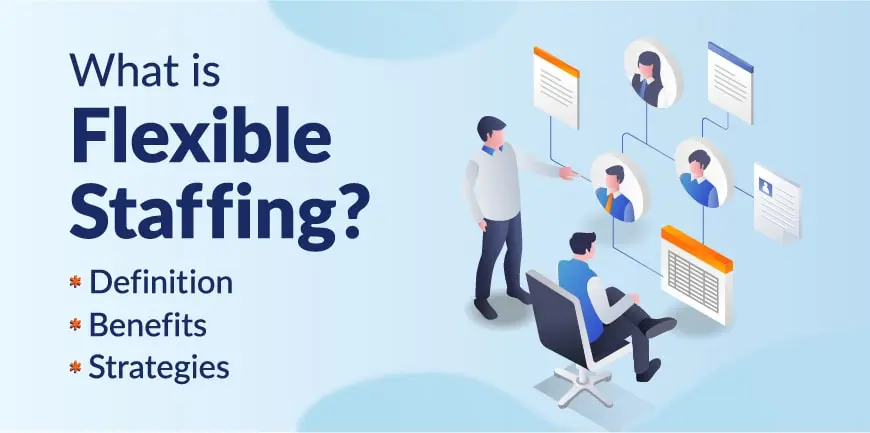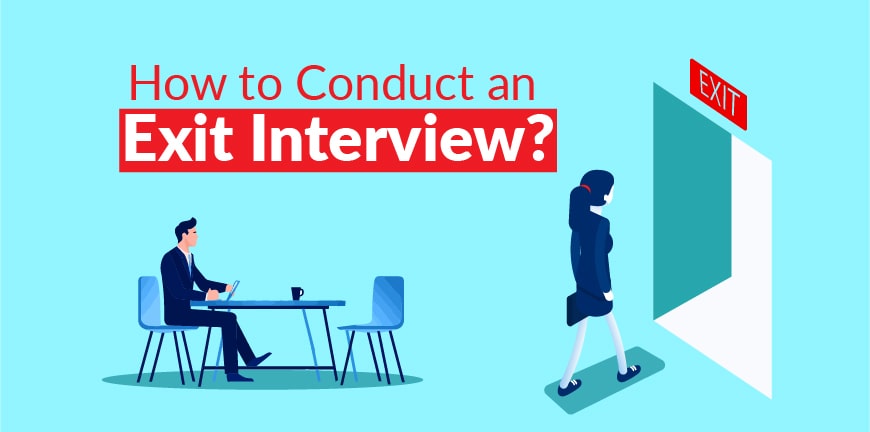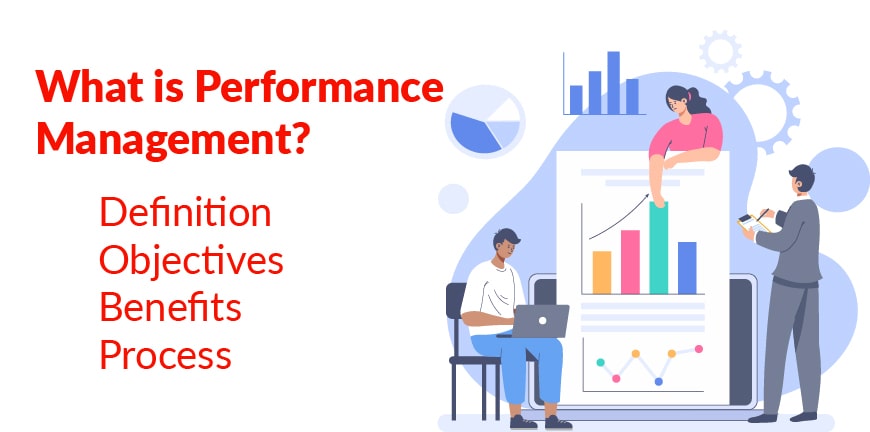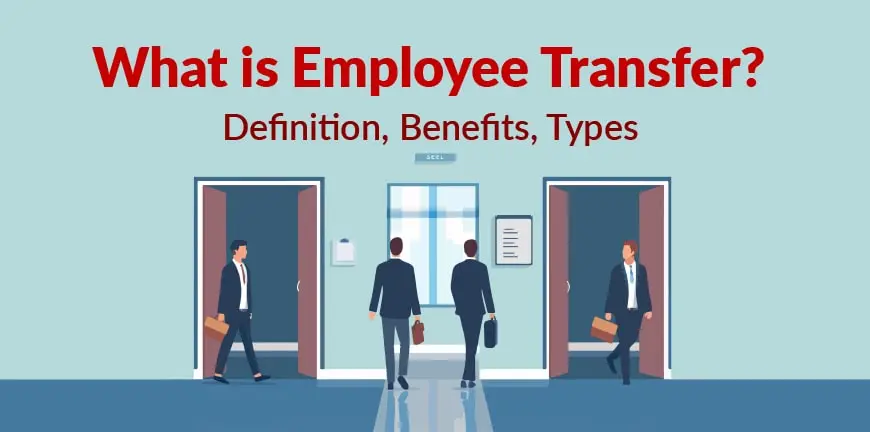
What is Corporate Training? Everything You Need to Know
06/08/2024
What is Flexible Staffing – Definition and Importance?
09/08/2024Letting go or effectively executing the exit process when an employee leaves the organization is just as difficult, complicated and sensitive as the onboarding process of an employee. However, the amount of importance recruiters and employers place in the recruitment process of an employee is often missing during the exit process of the same employee. And while employers can’t see it right at that moment, not conducting an exit process right, can harm the company in the long run.
No matter the reason an employee decides to exit an organization, as their employer, its crucial for you to conduct an exit interview that can not only helps you understand why they chose to leave but also benefits the employee as they get a chance to speak freely about their experience. The analysis can help you reduce your employee turnover rate.
What is an Exit Interview?
An Exit Interview refers to the conversation that happens between an employee who is exiting an organization and usually a member of the human resources team (mostly). It’s essential to carry out the exit interview in the right way as it gives the employer the opportunity to learn why the employee is leaving and with the analysis, moving forward, they can try to make those specific changes in the workplace favouring future employees.
How to Conduct an Exit Interview? What are the Best Practices to Follow?
There are certain practices you can follow to conduct an effective interview and some compelling questions you can ask the exiting employees. With this information, you can craft a template that you can follow for most exit interviews.
1. Choose the right format
Sometimes a face-to-face interview may work, and with some employees a video call or a written questionnaire may work. Depending on the employee’s comfort, you can choose any of the formats to conduct an interview
2. Choose the right person to interview the employee
The first and foremost important aspect is choosing the right person to interview the exiting employee. What does this mean exactly? The employee exiting the organization may be comfortable speaking to an interviewer who is neutral, someone they haven’t been working for or reporting to directly. An HR (Human Resource) who is calm, kind and non-judgemental and is liked by all is usually the best choice.
3. Make the exiting employee feel like they can be honest
The departing employee must feel at ease to talk to you and share their honest feedback. Not only does this make the employee feel comfortable and better and not guilty, but for the employers, this could be a great opportunity to understand the problems and act on them.
4. Set the right time to conduct the interview
The notice period could be quite difficult for both the employer and the employee. The former may be filled with questions as to why the employee is leaving and the latter could have a lot of mixed emotions as they are exiting the organization where they have made a commitment and connection with the organization. So, its best schedule the exit interview date as close as possible to their exit time, as they will feel much more at ease to share honest feedback at the time.
5. Ask open ended questions
Ask questions that can help you understand the reasons for the employee’s departure from the organization, but also bear in mind as to not bog them down with too many intense questions. Keep it casual, more like a peer-to-peer talk. You can ask them questions like
- Why have you decided to leave?
- What did you like most about working in this organization?
- Were your expectations for the role met?
- Did you get the resources you needed to succeed in your role?
- In a typical work week, did you feel stressed at any point? If so, how often?
- Is there anything we could have done to make you stay?
- How would you rate the support and encouragement you received from your superiors during your time here?
- Do you have any advice for your successor?
6. Ensure confidentiality
Ensure the employee that anything and everything they have to say is strictly confidential and they have all the rights to speak freely and openly about their concerns.
7. Share feedback with the employee
You may send a summary of their feedback and corrective measures you will take in the future. This will help maintain a good relationship with the employee even after their departure.
What you Should Avoid During an Exit Interview?
You may be tempted to dig deeper into why the employee is leaving, and stray away from the checklist questions ending up asking them certain uncomfortable questions which is an absolute no. Here’s what you shouldn’t be asking
- Don’t ask about any specific individual during the interview. You shouldn’t give them a reason to think you’re prying on a specific situation.
- Do not engage or address in office gossip if your employee is looking forward to
- Give them the chance to speak, understand them and offer as little opinion as possible
- Do not ask them to reconsider their choice. This will put them in a spot they do not want to be.
Exit Interview Checklist
Use this checklist to get the results you’re looking for while making the most of your departing employee’s time.
- Offer your departing employee several options for attending your exit interview, including remotely
- For employees who either can’t attend or aren’t interested in an exit interview, provide the option for them to take an exit survey
- Prepared all your questions ahead of time
- Make sure the questions in your list give the employee the opportunity to offer ways they believe your company can change and improve going forward
- Make sure your questions give the employee the opportunity to explain their reason for leaving your company
Interpret the Exit Interview Results
You conduct an exit interview for a reason. When the departing employee shares his thoughts and reasons for leaving the company, it’s up to you as to what you will make out of this feedback. To draw meaningful and actionable conclusions, here is what you can do-
1. Clean up the data
Make sure that you clean up data before anyone else can interpret it in your organization
2. Compare if there are any similarities and trends
If your departing employee has stated a reason for leaving that a few other employees have also stated in the recent past, pay attention to it and resolve the issue to make sure it doesn’t affect your brand name in the long run.
3. Observe if there are any roadblocks
If you haven’t received satisfactory responses from the exit interview, then you may have missed something. It could be unclear questions, uncomfortable questions, uncomfortable interview environments etc. Have a look out on these.
4. Share the exit insights with Stakeholders
Insights aren’t helpful if you don’t share them with people who can take action. Establish an agreed-upon process for sharing exit interview insights early to maximize engagement and impact.
Wrapping Up
Nearly every exit interview should uncover opportunities for company improvement. Share key insights from the interview with the employee’s supervisor or higher management when the feedback is relevant.
Identify patterns in the feedback from departing employees to pinpoint potential organizational issues. Compiling your notes into a spreadsheet can help you quickly scan for and identify recurring comments.
If you do notice things that can be changed, take it to the leadership team, suggest actions that could be taken and create a workplace your employees won’t want to leave, especially for the wrong reasons.
Contact Us For Business Enquiry

Rajkumar Shanmugam
Rajkumar Shanmugam is the Head of HR at ALP Consulting, bringing over 19 years of comprehensive HR leadership experience across India and international markets. His expertise spans talent acquisition, employee relations, performance management, compliance, and HR transformation. Rajkumar has a proven track record of driving people-centric initiatives, enhancing workplace culture, and aligning HR strategy with business goals. With extensive experience in US staffing operations and global mobility, he continues to lead organizational excellence through innovation and employee engagement.




